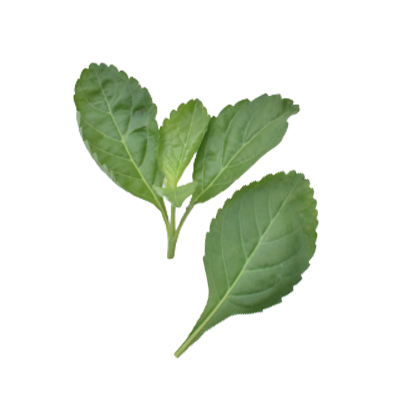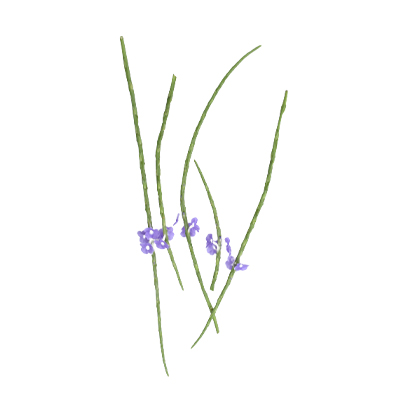Light Blue Snakeweed
Stachytarpheta jamaicensis (L.) Vahl.
Verbenaceae
Location in our garden
Principal
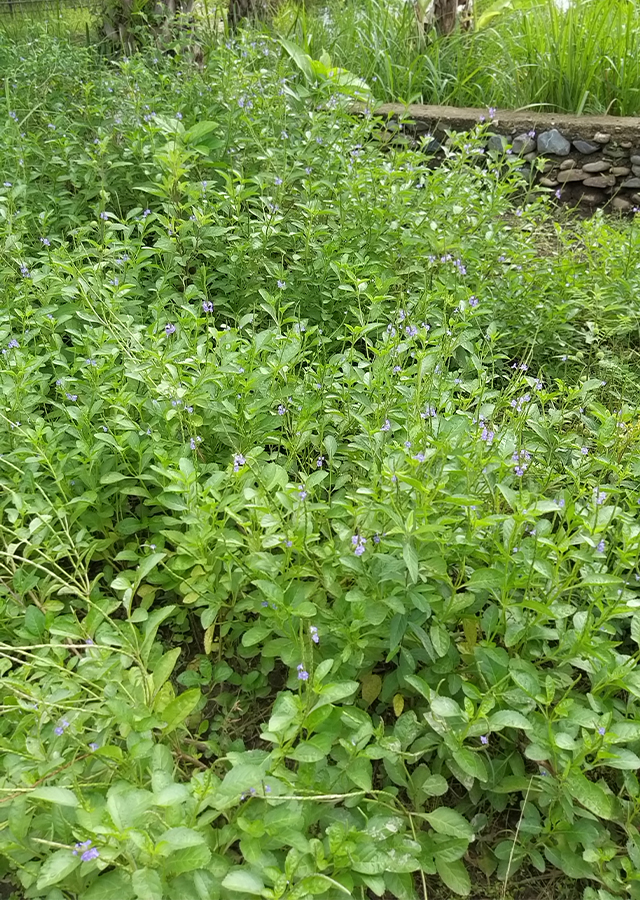
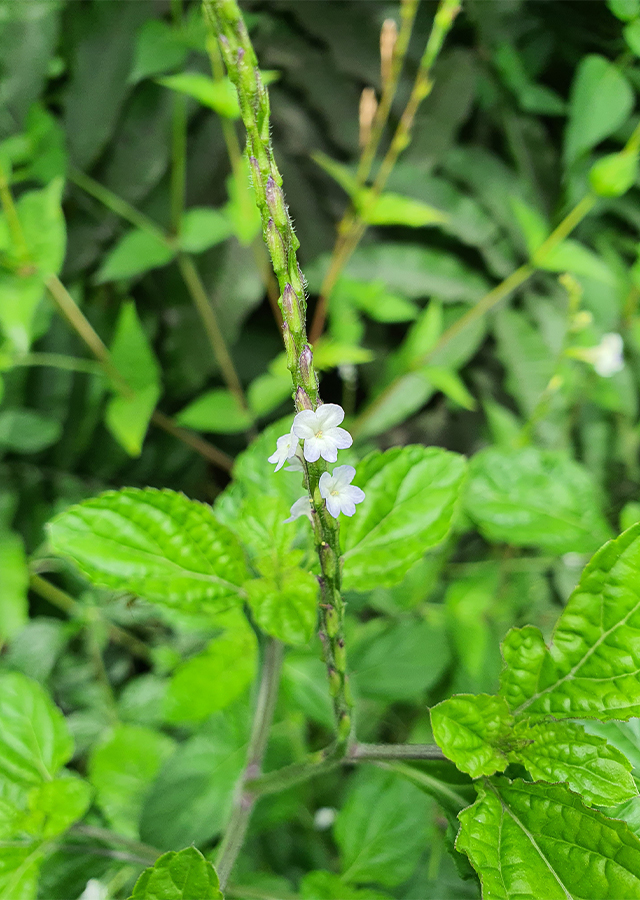
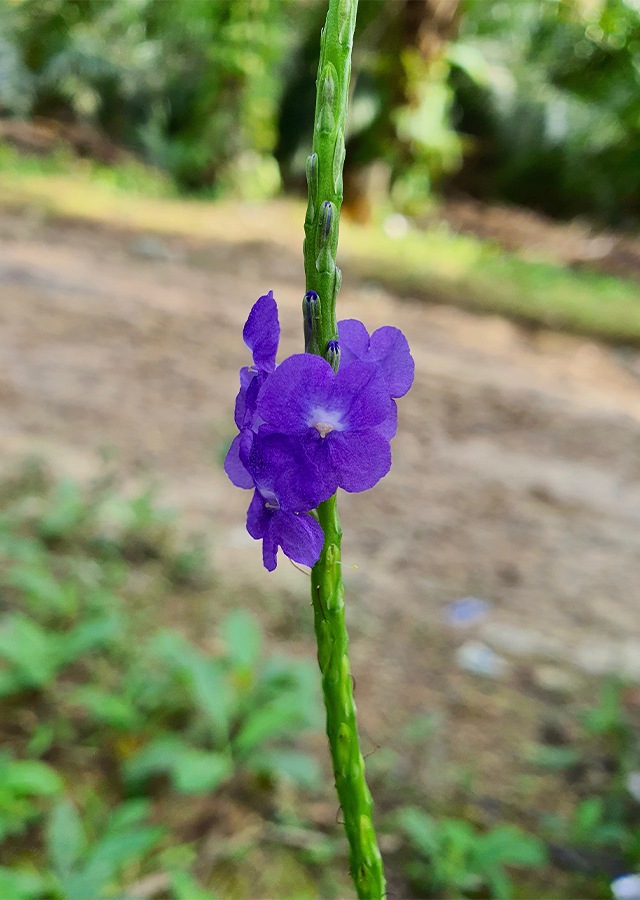
Synonym
Abena jamaicensis (L.) Hitchc.
Cymburus urticifolius Salisb.
Stachytarpheta bogoriensis Zoll. & Moritzi
Habitus
Herbaceous. Perennial woody herb that grows 60–120 cm tall
Part Used
Leaves
Bark
Fruit
Roots
Growing Requirements
Full Sunshine
Drought Resistant
Habitat
Riverbanks
Shrublands
Grassland
Overview
Light blue snakeweed is a perennial woody herb and now widespread in Central America, the Caribbean,the Pacific, East and Southern Asia but occurs less frequently in Africa. However, it is recorded as invasive in Tanzania and Kenya. It has been an important medicinal plant with great medicinal properties in traditional and folk medicinal systems.
Vernacular Names
Jia ma bian (Chinese), Ramput tahi babi (Malaysia), Katapunuttu (India), Jamaica snakeweed (Australia), Albaka (Philippines), Bulunakuta (Sri Lanka).
Agroecology
This plant is a common weed of disturbed soils, especially in pastures, this plant mostly grows in the tropical regions of America, as well as in the subtropical forests of Asia, Africa and Oceania. It thrives in moist, fertile soils, but will also tolerate seasonal drought. It tolerates soil compaction, vehicular passage and trampling by livestock, and grows in a wide range of soils. habitat is lightly shaded to sunny, It requires medium to high light intensities and grows poorly in dense shade. The plant grows to altitudes of 800 m in India and up to 1500 m asl.
Morphology
- Stems - terete, the younger ones slightly angled, erect and branched half-woody plant, with swollen nodes, dark green coloured stem.
- Leaves - paired, elliptic to oblong-ovate, 2.5 to 10 centimeters long, with pointed tips and toothed margins, the base decurrent on the petiole.
- Flowers - lavender, lilac, purple or bluesessile, at first erect, later immersed in the thickened rachis, opening 1-3 at a time from the base towards the tip of 20-40 cm long spikes at the ends of the branches, each flower partly buried in the spike, five unequal petals 5-8 mm across, and two stamens. Corolla pale bluish, violet or purple.
- Fruits - a schizocarp, oblong-linear, is enclosed in the calyx, appressed to and somewhat sunk in the rachis, smooth, oblong, and about 4 millimeters long.
- Seeds - concavo-convex, 5 mm long, linear, without endosperm, ridged, brown, retained within the spikes which thicken to ca 5 mm diameter over the seeds.
Cultivation
It reproduces solely by seeds. Seeds are easily dispersed by rainwater.
Chemical Constituents
Alkaloids, terpenoids, tannin, saponin, quinone, phenol, phlobotanin, flavonoids, triterpenes, monoterpenes, iridoids, phytosterols, aromatic acids, dopamine and alkanes.
Traditional Medicinal Uses
- Considered antihypertensive activity, antinociceptive, antidyslipidaemia, epatoprotective effect, wound healing, antifungal, antimicrobial, antiplasmodial, antidiarrheal, antioxidant, cytotoxic, hypoglycemic, analgesic, anti-inflammatory, immunosuppressant, hepatoprotective, galactogenic, hair-promoting properties.
- In Brazil, used for coughs, fever, to expel worms and promote menstruation; as a diuretic and laxative, for rheumatism.
- In Nigeria, leaf decoction is used for dysentery, as vermifuge, for menstrual disorders and female complaints; it taken after childbirth to help restore the uterus to its original position.
- In Peru, it is used for diabetes.
- In Taiwanese folk medicine, used for liver disease and rheumatism.
- In immigrant Haitian communities in Cuba, an infusion made from three whorls or tops of S. jamaicensis is used for children in the morning on an empty stomach as an anthelmintic.
Part Used
Reference Sources
- Liew, P. M., & Yong, Y. K. (2016). Stachytarpheta jamaicensis (L.) Vahl: from traditional usage to pharmacological evidence. Evidence-Based Complementary and Alternative Medicine, 2016, 1-7
- Witt A, Luke Q, 2017. Guide to the naturalized and invasive plants of Eastern Africa. [ed. by Witt A, Luke Q]. Wallingford, UK: CABI. vi + 601 pp. http://www.cabi.org/cabebooks/ebook/20173158959DOI:10.1079/9781786392145.0000



